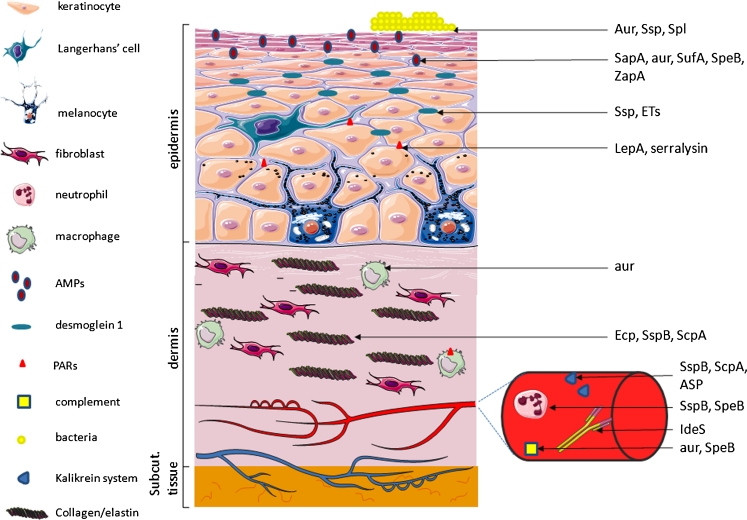Fig. 1.
Representation of some bacterial protease targets in the skin. Bacterial proteases (right) contribute to skin colonisation by microorganisms by providing nutrients and by modulating bacterial adherence properties. In epidermis, bacterial proteases can neutralise antibacterial peptides (antimicrobial peptides [AMPs], such as LL37), creating a safe niche for AMP-susceptible pathogens. The disruption of desmosomal kadherins (desmoglein 1), which provide cell-cell adhesion, causes exfoliation in the stratum granulosum. Bacterial proteolytic activity induces protease-activated receptor (PAR) signalling involved in cutaneous inflammation. Pathogen penetration is facilitated by degradation of collagen and elastin, essential components of connective tissue of the dermis, by secreted bacterial proteases. Proteases produced by skin bacteria modulate the skin immune system. Professional phagocyte functions are disabled upon bacterial proteases. Proteases may also lead to the depletion of functional neutrophils at infection sites, thus facilitating pathogen colonisation and spreading in subepithelial tissues. The cleaving of antibodies by bacterial proteases leads to the avoidance of an immunological response. Bacterial proteases target and subvert the complement system by degrading or binding complement components to prevent activation of the pathway. As potent activators of the contact system, bacterial proteases may participate in the uncontrolled generation of proinflammatory mediators, inducing an excessive inflammatory reaction, which can lead to serious tissue damage (Subcut. subcutaneous). Figures were produced using Servier Medical Art

